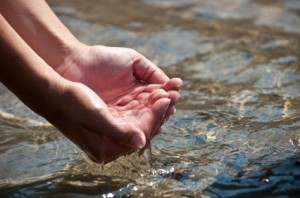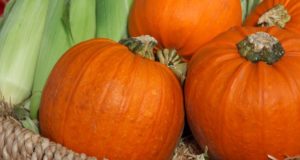 There are so many things that can happen to affect the safety of your drinking water. Natural disasters such as floods, hurricanes, tornadoes, ice storms, and earthquakes (to name a few) can contaminate public supplies of water. Man-made disasters, from war to cutting through a water main while running a ditcher can cause a disruption in the water supply with little or no warning. Without notice, your water can become contaminated and unfit to drink. Planning for any and all contingencies in advance will help you insure that you have safe drinking water in an emergency. If you wait to scrounge for water until after the emergency has happened, you’re already too late!
There are so many things that can happen to affect the safety of your drinking water. Natural disasters such as floods, hurricanes, tornadoes, ice storms, and earthquakes (to name a few) can contaminate public supplies of water. Man-made disasters, from war to cutting through a water main while running a ditcher can cause a disruption in the water supply with little or no warning. Without notice, your water can become contaminated and unfit to drink. Planning for any and all contingencies in advance will help you insure that you have safe drinking water in an emergency. If you wait to scrounge for water until after the emergency has happened, you’re already too late!
While being able to have stores of water in the event of a catastrophe would be nice, many of us are not in a position (due to lack of space) to have on hand several 55-gallon barrels of water. Even if you don’t have the room to store copious quantities of water, there are still ways to keep safe water available for you and your family.
How Much Water Do I Really Need?
A person can survive weeks and sometimes several months with little or no food, but only a short time without water. The human body, depending on age and size, is composed of anywhere from 55-60% water (adult men and women) to over 70% water (babies). The accepted rule of thumb is that two quarts minimum is needed on a daily basis just to survive. In an environment that is very hot, cold or dry, two quarts may not be enough. If you’re sweating or active, a gallon of water a day may just only sustain you.
While your body may be two-thirds water, this fluid is needed for circulation and bodily functions. The more dehydrated you become, the thicker your blood becomes, and the harder your heart has to pump to get that sludge through your veins. If you lose just 2.5% of your weight due to water loss, you lose 25% of your efficiency. For a person weighing 175 pounds, it only takes a loss of two quarts of water to begin adversely affecting your ability to survive.
For safety’s sake, plan on needing six (6) gallons of water a week for each person. However, the good news is that your water consumption doesn’t have to be just plain water. The juice off canned vegetables and fruits also counts as liquid.
Even if you can’t store barrels of water, you can at least give yourself a head start by socking away as many gallon jugs as possible. Avoid using milk jugs, as any amount of milk left in the container will contaminate your water with bacteria. Also, don’t use containers that have been used for chemicals or bleach. Gallon jugs that have held fruit juices are excellent, as is just buying up a couple of gallons a week of bottled water from the grocery store. To improve the taste of water stored for a long time, pour it back and forth from one container to another before drinking.
My Stores Are Gone—What Do I Do Now?
You have several sources of water should the public water supply be compromised or you’ve gone through your water stores. Your water heater is a source of water, as is the tank (not the bowl) of the toilet. In addition, you can get water from ponds and streams. The main thing is to have the means necessary to chemically purify whatever water you find from non-traditional sources. Even if you chemically treat your water, however, it’s always recommended that you boil it for one minute first (if at all possible) before treating it, just as an added precaution.
Bleach…
You can purify water with plain household bleach, the kind that contains hypochlorite (chlorine) in a full-strength 5.25% solution. Make sure that it contains no soap. Use regular, unscented bleach for best results. Using the following table as a guideline, stir the bleach in your water to completely mix. Let it stand for 30 minutes. (It should have a slight chlorine odor. If not, repeat the process and let it stand an additional 15 minutes.)
| AMOUNT OF BLEACH | ||
| Amount of Water | Clear Water | Cloudy Water |
| 2 liters | 4 drops | 1/8 teaspoon |
| 1 gallon | 1/8 teaspoon | 1/4 teaspoon |
| 5 gallons | 1/2 teaspoon | 1 teaspoon |
Iodine…
Iodine from a medicine kit will purify water in an emergency. It should be 2% USP strength. Using a medicine dropper, add 20 drops per gallon to clear water and 40 drops per gallon for cloudy water. Mix or stir completely and allow the water to stand at least 30 minutes before using.
Purification Tablets…
You can buy purification tablets from sporting goods stores, army surplus stores, large discount or drug stores and online websites. These tablets have a shelf life of several years if unopened and stored according the manufacturer’s recommendations. Follow the directions on the package. Remember, these tablets are for emergency use and should not be used on a daily basis with your public water supply.
Remember to clean and sanitize any containers you use to store your water in, and unless your water comes in contact with flood waters or other contaminants, your stored water should be safe to use without retreating it.
If you liked this article you may be interested in this product from our sponsor.

 Off The Grid News Better Ideas For Off The Grid Living
Off The Grid News Better Ideas For Off The Grid Living



